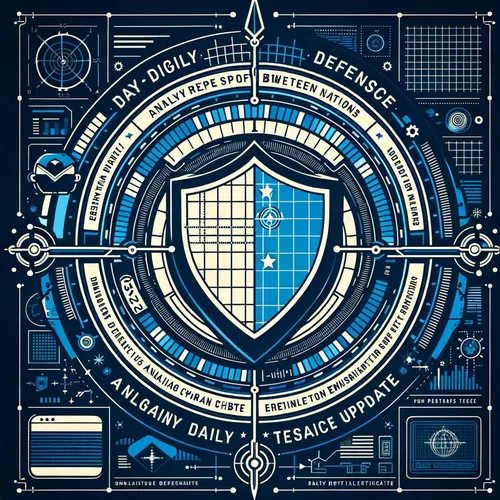China's Cyber Tricks: Spies, Lies, and Compromised Wi-Fi - Oh My!
- Author
- Quiet. Please
- Published
- Mon 25 Aug 2025
- Episode Link
- https://www.spreaker.com/episode/china-s-cyber-tricks-spies-lies-and-compromised-wi-fi-oh-my--67509990
This is your China Hack Report: Daily US Tech Defense podcast.
Welcome back, listeners, to another pulse-check episode of China Hack Report: Daily US Tech Defense. I’m Ting—your favorite cyber sleuth with a flair for the dramatic, and if you thought today’s news cycle would be quiet, think again… The last 24 hours have been a whirlwind in US-China cyber chess.
Let’s kick off with Google’s fresh warning about UNC6384, a China-linked group bent on espionage and social engineering. According to Google’s Threat Intelligence Group and the savvy Patrick Whitsell, UNC6384 played dress-up with malware disguised as software updates—think Adobe plug-ins, but with a side of ‘give me your sensitive secrets.’ The trick? Hackers compromised Wi-Fi networks, lured diplomats to download a payload called SOGU.SEC, and slithered right through device memory, dodging most antivirus. Does that spell routine credential thievery? Not quite. The aim seems deep data exfiltration—so, listeners in government agencies, the drama isn’t in your group chat, it’s on your hard drive.
Meanwhile, researchers at Mimecast and Sophos flagged a relentless credential-harvesting campaign targeting ScreenConnect administrators. The hackers—suspected Qilin ransomware affiliates—leveraged compromised Amazon email services to spread Adversary-in-the-Middle phishing that outfoxes two-factor authentication. Picture this: super-admin IT folks get spoofed emails, think they’re logging in for some harmless maintenance, and suddenly the attackers have admin keys to the remote-access kingdom. That’s not just a ransomware risk, it’s corporate infrastructure wide open. Sophos even recorded exfiltration and mass encryption attacks sweeping through managed service providers—all thanks to maliciously installed ScreenConnect. It’s like giving a cat the keys to the canary cage.
For infrastructure nerds—shout out to my port security aficionados—Booz Allen Hamilton’s Brad Medairy and David Forbes revealed that 80 percent of American port cranes are sourced direct from China. That’s not just a sourcing story, it’s a vulnerability at the core of national security and economy. Threats like Salt and Volt Typhoon don’t just want your files; they want to pre-stage attacks, potentially flipping switches in transport or military mobilization in times of crisis. Think ports, rails, aviation—anywhere the flow of goods meets the machinery of defense.
On the legal beat, the US Department of Justice announced sentencing for Chinese developer Davis Lu, who sabotaged his Ohio employer by embedding malicious code and a brutal kill switch into production servers. This was an insider job, more disgruntled genius than geopolitical operator, but it’s a wakeup call: The trusted insider remains a potent threat vector.
CISA, the Cybersecurity and Infrastructure Security Agency, is busy. They’re working with Microsoft to tackle Chinese-nexus attacks hitting SharePoint, underlining the urgent need for emergency patches and threat hunting across government systems. CISA’s stance? Patch, segment, audit, and don’t trust—verify everything. If you’re a sysadmin and you haven’t reviewed your zero trust policies today, congratulations! You’re on China’s favorite target list.
Immediate actions recommended: audit privileged access, patch critical software today—not tomorrow, and triple-check logs for weird lateral movement. Have your response plan tightly choreographed, and be ready for the next pivot.
Thanks for tuning in, listeners! Don’t forget to subscribe for your daily shot of cyber reality, and remember: curiosity didn’t kill the cat, lack of patching did. This has been a quiet please production, for more check out quiet please dot ai.
For more http://www.quietplease.ai
Get the best deals
